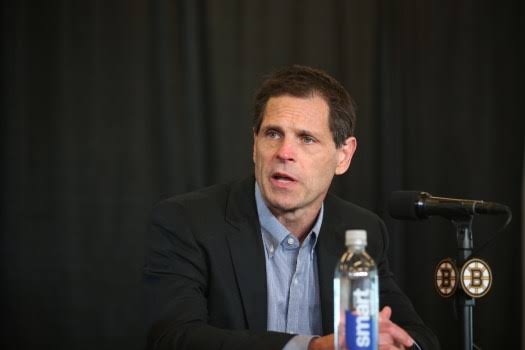They Aim To Remain A Dominant Force In The NHL.

The Boston Bruins have made significant
adjustments to their lineup, sparking
interest among fans and analysts as the
team aims to maintain its competitive
edge in the 2024-2025 NHL season. After
a strong start to the season, the Bruins
coaching staff appears intent on finding
the right balance of talent, skill, and
chemistry as they work toward a deep
playoff run. These changes could reflect
a shift in strategy, giving Boston a new
look on both ends of the ice.
A New Approach to Offense.
One of the most notable changes
revolves around the forward lines. Coach
Jim Montgomery has moved away from
the Bruins’ traditional top-heavy
structure, which often leaned heavily on
their first line for scoring. This season,
there seems to be a conscious effort to
spread out offensive responsibility
across all four lines, with the hope that
depth scoring will provide a more
sustainable and balanced attack.
Reports suggest that some of Boston’s
core forwards, like Charlie Coyle and
Pavel Zacha, are being given more
prominent roles. Zacha, who had a
career-best season last year, has been
pushed into more pivotal situations,
including power play opportunities and
time on the first line. His versatility and
two-way game could be a key factor in
how the Bruins shape their offense this
season.
On the other hand, Coyle, who often flew
under the radar despite being a reliable
center, is now tasked with anchoring the
second line. His physicality and ability to
protect the puck in the offensive zone
will be crucial for the Bruins’ depth
scoring. By bolstering the middle six, the
team is betting on a more dynamic and
unpredictable offense.
Defensive Adjustments.
The Bruins’ blue line has also seen
changes, particularly with how the
defensive pairings are structured.
Veterans like Charlie McAvoy remain
integral to Boston’s defense, but younger
players like Mason Lohrei and Jakub
Zboril are being given more ice time to
develop in high-pressure situations. The
goal is to build a more mobile and
flexible defensive unit that can transition
quickly and contribute to the attack.
McAvoy, a Norris Trophy-caliber
defenseman, continues to log heavy
minutes in all situations. However, the
addition of younger, faster defensemen
like Lohrei could relieve some of that
pressure, giving McAvoy more freedom
to focus on his offensive contributions.
Zboril’s role has also expanded, as the
Bruins appear to be testing his ability to
step up as a reliable two-way
defenseman.
This new defensive strategy could make
the Bruins harder to play against,
especially as teams increasingly value
speed and puck movement from their
defense. A more versatile defensive
corps will allow Boston to break out of
their zone more efficiently, generating
more offensive opportunities from the
back end.
Goaltending Decisions.
Goaltending has been one of the Bruins’
strongest assets in recent years, and the
tandem of Linus Ullmark and Jeremy
Swayman remains intact for now.
However, there have been discussions
around how the Bruins will split time
between the two elite goalies this season.
Ullmark, who won the Vezina Trophy last
year, is expected to start the majority of
games, but Swayman’s performance has
made a strong case for a more even split.
The decision to rotate goaltenders more
frequently could give Boston an edge, as
both Ullmark and Swayman are capable
of shutting down opposing offenses on
any given night. This goaltending depth
provides the Bruins with a sense of
security, allowing them to rest players as
needed without sacrificing performance
in net.
The challenge for Coach Montgomery
will be finding the right balance,
ensuring that both goalies remain sharp
without overworking either one. Given
the Bruins’ Stanley Cup aspirations,
maintaining a healthy, well-rested
tandem could prove critical down the
stretch.
Impact of the Lineup Changes.
These lineup adjustments signal a clear
intent from the Bruins coaching staff:
they are willing to experiment with new
combinations in search of a more
balanced and resilient team. While
Boston has historically relied on its top
line and goaltending for success, the
Bruins’ current strategy suggests a more
holistic approach to winning games.
Fans can expect to see more
contributions from the third and fourth
lines, with players like Trent Frederic
and Jake DeBrusk playing larger roles
than in previous seasons. The shakeup
also allows the coaching staff to adapt
quickly to injuries or slumps, making the
Bruins a more unpredictable and
adaptable team as they navigate the
grueling NHL season.
As the season progresses, it will be
fascinating to see how these changes
unfold and whether they help Boston
secure another deep playoff run. The
Bruins have consistently been one of the
top teams in the league, and with their
recent roster adjustments, they aim to
remain a dominant force in the NHL.



